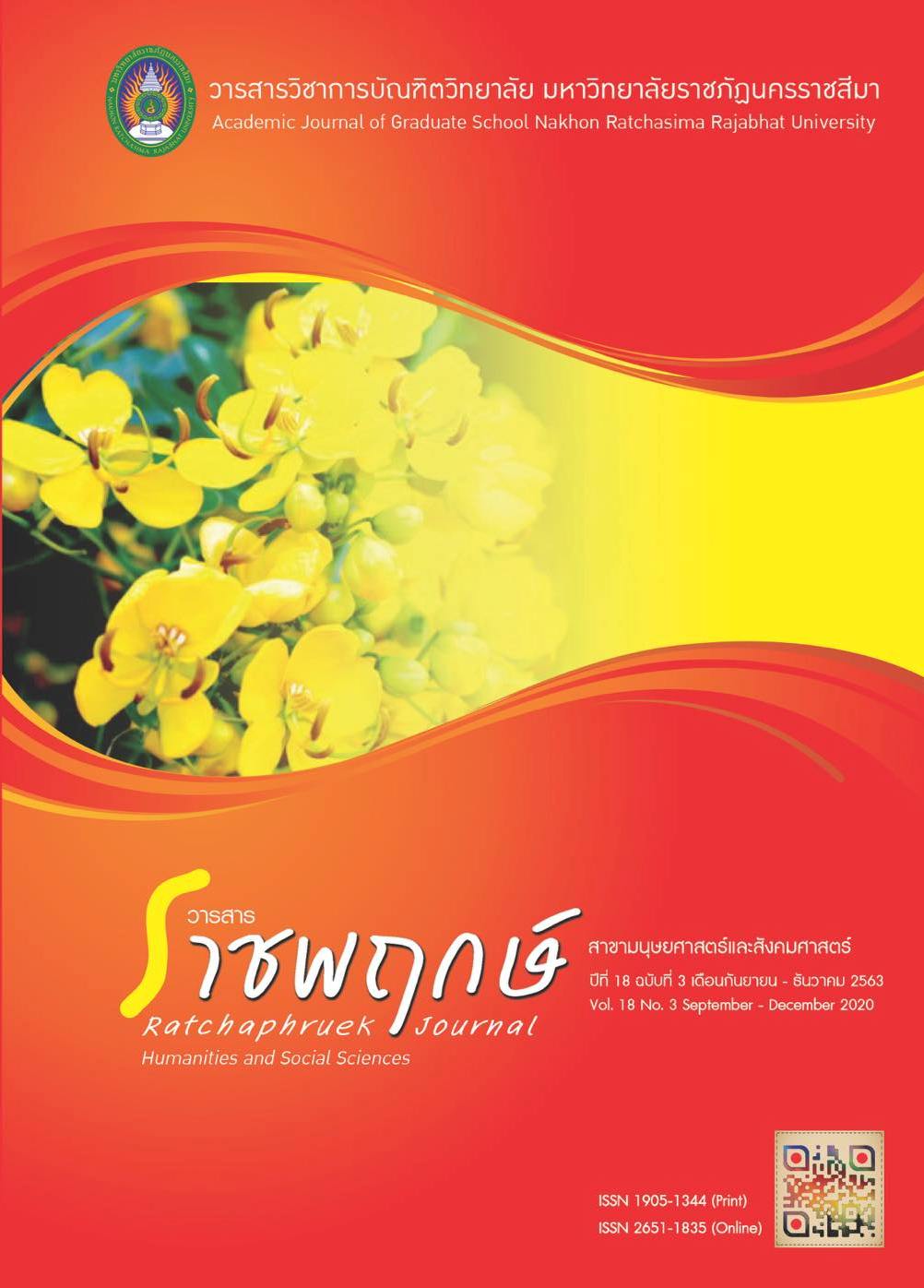Multimedia Learning Environments for Enhancing Students' Analytical Thinking
Main Article Content
Abstract
Learning environments for enhancing students’ critical thinking can be referred to as web-based learning media which have been designed and developed based on the Constructivist theory. They promote learners’ knowledge and critical thinking through the principles of Constructivist learning environments. This model for learning activity was designed by integrating web-based learning media and Constructivist learning theory. It consists of media features and media symbol systems to facilitate learners’ learning, and its design was based on critical thinking. The essential elements are as follows: 1) Problem base; 2) Resources; 3) Analytical thinking support center; 4) Scaffolding; 5) Reading comprehension support center; 6) Intelligence tools; 7) Collaboration; and 8) Coaching. Learning environments for promoting students’ critical thinking could enable learners to compartmentalize or classify elements of one particular matter with specified criteria. In addition, with such learning environments, learners will be equipped with abilities to identify the causal relationship among components as well as to categorize issues or matters with shared features.
Article Details
References
ชั้นประถมศึกษาปีที่ 6. กรุงเพทฯ: กรมวิชาการกระทรวงศึกษาธิการ.
กระทรวงศึกษาธิการ. (2550). ตัวชี้วัดและสาระการเรียนรู้แกนกลางกลุ่มสาระการเรียนรู้
ภาษาไทยตามหลักสูตรแกนกลางการศึกษาขั้นพื้นฐานพุทธศักราช2551. กรุงเทพมหานคร: โรงพิมพ์ชุมนุม
จรัล คำภารัตน์. (2551). การพัฒนาความสามารถในการคิดวิเคราะห์และผลสัมฤทธิ์ทางการ
เรียนวิทยาศาสตร์ของนักเรียนระดับชั้นมัธยมศึกษาปีที่3โดยใช้วิธีการทาง วิทยาศาสตร์ตามแนวคิดของJohnDewey.วิทยานิพนธ์ปริญญาศึกษาศาสตร์ มหาบัณฑิต สาขาวิชาเทคโนโลยีการศึกษา บัณฑิตวิทยาลัย มหาวิทยาลัยขอนแก่น.
สุมาลี ชัยเจริญ และคณะ. (2550). ศึกษาสภาพบริบทที่เกี่ยวข้องกับการคิดของผู้เรียน.
รายงานการวิจัยโครงการวิจัยประเภททุนอุดหนุนทั่วไป มหาวิทยาลัยขอนแก่น.
สุมาลี ชัยเจริญ . (2557). เทคโนโลยีการศึกษาหลักการทฤษฎีสู่การปฏิบัติ Educational Technology: Principles Theories to Practices. ขอนแก่น: โรงพิมพ์คลังนานาวิทยา.
สำนักงานคณะกรรมการการศึกษาแห่งชาติ. (2551). หลักสูตรแกนกลางการศึกษาขั้นพื้นฐานพ.ศ. 2551. พิมพ์ครั้งที่ 2. กรุงเทพฯ: โรงพิมพ์ชุมนุมสหกรณ์การเกษตรแห่งประเทศไทย.
วริศรา คอวนิช. (2550). ผลของสิ่งแวดล้อมทางการเรียนรู้บนเครือข่ายตามแนวทฤษฎี
คอนสตรัคติวิสต์ที่ส่งเสริมการคิดเชิงวิเคราะห์ของผู้เรียน.วิทยานิพนธ์ปริญญาศึกษาศาสตร์มหาบัณฑิตสาขาวิชาเทคโนโลยีการศึกษาบัณฑิตวิทยาลัย มหาวิทยาลัยขอนแก่น.
ศราวุธ จักรเป็ง. (2553) การพัฒนาโมเดลสิ่งแวดล้อมทางการเรียนรู้บนเครือข่ายตามแนว
คอนสตรัคติวิสต์ที่ส่งเสริมการคิดอย่างมีวิจารณญาณสำหรับเด็กไทยในศตวรรษที่
21. วิทยานิพนธ์ปริญญาศึกษามหาบัณฑิต สาขาวิชาเทคโนโลยีการศึกษา บัณฑิตวิทยาลัย
มหาวิทยาลัยขอนแก่น.
Klausmeier, H.J. (1985). Educational Phychology. 5th ed. Canadian Social Science,
8(4), 62-66.
Mayer, R.E. (1996). Designing Instruction for Constructivist Learning. Instructional
Design Theories And Models: A New Paradigm of Instructional Theory. New
Jersey : Lawrence Erlbaum Associates.
Hannafin M., Susan L. & Kevin O. (1999). Open learning environments: Foundations, methods, and models. In M.R. Charles (Ed). Instructional design theories and models: A new paradigm of instructional theory. (pp. 2). Newjersy: Lawrence Erlbaum Associates.
Sumalee Chaijaroen. (2009). Effective Media-Utilility in Learning. Ph.D.Dissertation, University Of Tsukuba.
Richey, R.C. and Klein, J. (2007). Design and developmental research. New Jersey: Lawrence.


